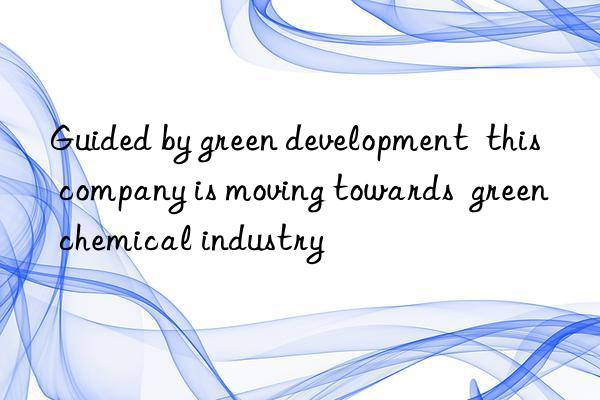
As a global chemical giant, BASF has been operating in China for nearly 140 years. It is also one of the largest foreign-funded enterprises in the chemical industry in China. It has maintained close cooperation with China for many years. BASF has invested more than 9 billion euros in Greater China so far ( Jointly invested more than 13 billion euros with partners), and established a competitive local production, marketing, sales, technical service and innovation network. BASF's main production bases are located in Shanghai, Nanjing, Chongqing and Zhanjiang (under construction), and the Shanghai Innovation Park is the R&D hub of BASF in the Asia-Pacific region.
Find out the "carbon footprint" to achieve precise emission reduction
Chemical enterprises are energy-intensive enterprises, and chemical products are raw materials related to thousands of downstream products, involving all aspects of clothing, food, housing and transportation. Therefore, how to reduce carbon dioxide emissions from its own production and operation is an important issue for BASF.
First of all, BASF reduces carbon dioxide emissions and energy consumption from the source, implements "responsible procurement", and is committed to improving the sustainability of procurement. At the same time, manage the upstream and downstream supply chains in a responsible manner, actively promote supplier evaluation, and help them improve their sustainable development performance.
Secondly, BASF uses new technologies and processes to develop and deploy new, zero-carbon and low-emission production processes for emission-intensive basic chemicals to reduce carbon emissions in production operations.
In addition, BASF is also actively purchasing green electricity and increasing the use of renewable energy, which not only meets BASF's energy needs, but also meets the requirements of "low-carbon energy" in green factories.
Under the background of "dual carbon" and "dual cycle", BASF promotes the development of circular economy by continuously increasing the use of recycled and renewable raw materials, creating new material cycles, and creating new business models. For example, in BASF's biomass balance program, organic waste and vegetable oil can be used to extract renewable raw materials, replace fossil fuels, and realize waste recycling and reuse. BASF's "ChemCycling™" project uses chemically recycled plastic waste to produce products industrially, improving the recyclability of plastics and helping the circular economy.
In the past ten years, BASF has reduced a large amount of carbon dioxide emissions by improving production processes and introducing new technologies to improve production efficiency and reduce energy consumption. As early as 2018, BASF Advanced Materials Co., Ltd. obtained the national "Green Factory" certification, and was among the first batch of enterprises to obtain the certification.
BASF has always been on the road of "carbon reduction", rooted "green genes" in its operation and production process, and set an ambitious climate protection goal - by 2030, the global carbon dioxide emissions will be reduced compared with 2018 reduce by 25% per year and achieve net-zero carbon dioxide emissions by 2050.
From top to bottom, green runs through the entire supply chain
In order to improve the sustainability of the supply chain of chemical companies, BASF and its partners in the chemical industry jointly launched the "Together for Sustainability" (TfS) chemical industry initiative in 2011 to evaluate and improve sustainable procurement practices. In China, BASF started the sustainable development training for BASF Chinese suppliers in 2014, and hundreds of suppliers have participated in it so far. Then, in 2021, BASF launched the "Supplier Carbon Dioxide Management" plan to further strengthen the management of suppliers' sustainable production, improve the transparency of BASF's raw material procurement and carbon emissions; at the same time, it also helps upstream suppliers optimize green production management , to identify and manage sustainable development risks in the supply chain in a timely manner.
For many downstream customers such as battery materials, automobiles, construction, new energy, and agriculture, BASF will also provide sustainable solutions to them, which will promote the green transformation of downstream industries to a certain extent. For example, BASF's building insulation materials can reduce carbon emissions during building use, biomass balance coatings can help reduce the carbon footprint of automotive customers' products, and "shark skin" films can reduce carbon emissions from airline aircraft...
In the future, BASF will continue to uphold the corporate purpose of "creating new chemical functions and pursuing a sustainable future", lead by green development, cooperate with the upstream and downstream of the supply chain, and jointly build a green value chain, so as to promote China's early realization of Carbon neutrality goal.



 微信扫一扫打赏
微信扫一扫打赏
